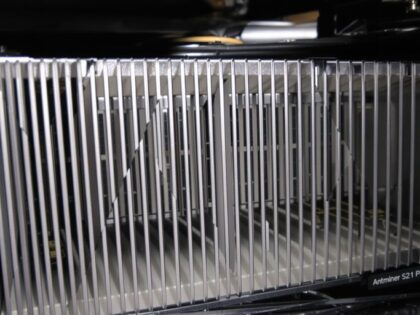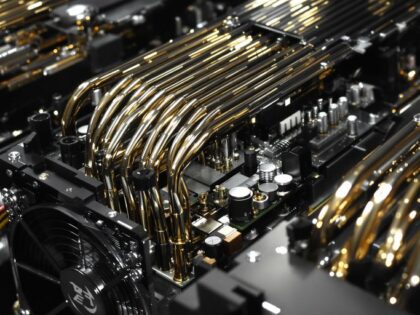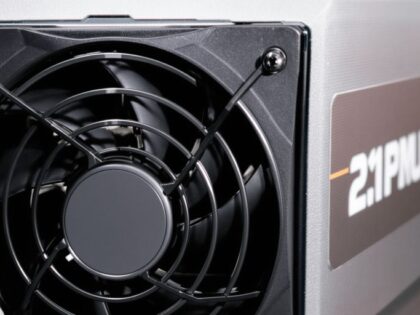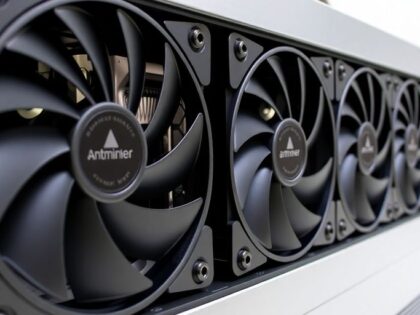ASIC Mining: What It Is & How It Works
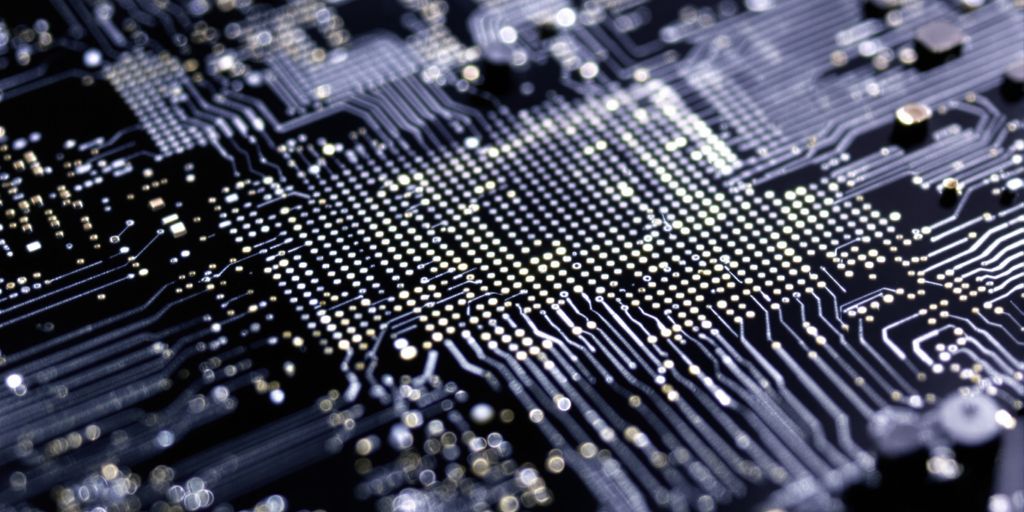
So, you’ve heard about Bitcoin mining, right? Maybe you’ve even thought about getting into it. It used to be that you could mine with your regular computer, but things have changed a lot. Now, there’s this specialized gear called ASICs that everyone talks about. They’re super powerful and designed for just one thing: mining crypto. But what exactly are they, and how do they even work? We’ll break down what ASIC mining is all about, how it compares to other methods like using your gaming PC’s graphics cards, and what you need to know if you’re thinking about setting one up yourself. We’ll also touch on the companies making this gear and whether it’s actually worth the investment, especially when considering gpu mining profitability.
Key Takeaways
-
ASIC stands for Application-Specific Integrated Circuit, meaning these devices are built for one purpose: mining cryptocurrency.
-
ASICs are far more efficient and faster at mining than general-purpose hardware like CPUs or GPUs because they’re specialized for specific crypto algorithms.
-
The evolution of mining hardware went from CPUs to GPUs, then FPGAs, and finally landed on ASICs, which now dominate for major cryptocurrencies like Bitcoin.
-
Setting up ASIC mining involves acquiring specialized hardware, configuring its software, and often joining a mining pool to increase chances of rewards.
-
While ASICs offer superior performance, their high initial cost, energy consumption, and specialization mean miners must carefully consider factors like difficulty, rewards, and gpu mining profitability when making decisions.
Understanding ASIC Mining Technology
When you’re looking to get into serious cryptocurrency mining, you’ll quickly hear about ASICs. ASIC stands for Application-Specific Integrated Circuit, and these machines are the workhorses of modern crypto mining. Unlike the CPUs in your laptop or the GPUs used for gaming, an ASIC miner is built from the ground up for one single purpose: mining a specific cryptocurrency algorithm. Think of it like this: a CPU is a Swiss Army knife, good at many things but not the best at any one thing. A GPU is like a specialized chef’s knife, great for many kitchen tasks. An ASIC, however, is a custom-made tool designed solely to, say, perfectly slice tomatoes, and it does that job better and faster than anything else.
What Is an Application-Specific Integrated Circuit?
An Application-Specific Integrated Circuit, or ASIC, is a microchip custom-designed for a particular use. In the world of cryptocurrency, this means the chip is engineered to perform the complex mathematical calculations required for mining a specific coin, like Bitcoin’s SHA-256 algorithm. This specialization is what gives ASICs their edge. Because they aren’t bogged down with the circuitry needed for general computing tasks, they can focus all their power on hashing, leading to significantly higher hash rates and better energy efficiency compared to older methods. This focus is key to maximizing your mining profits.
How ASIC Miners Differ From Other Hardware
Before ASICs, people mined cryptocurrencies using CPUs and then GPUs. CPUs are the processors in everyday computers, and GPUs are the graphics cards used for gaming. While these could mine, they were slow and inefficient for serious operations. GPUs offered an improvement, allowing miners to build rigs with multiple cards, but they still weren’t purpose-built for mining. ASICs changed the game entirely. They are designed with specialized chips that are incredibly efficient at solving the specific hashing algorithms of cryptocurrencies. This means an ASIC miner can perform calculations much faster and use less electricity per calculation than a GPU or CPU. For anyone serious about profitability, this efficiency is a major factor. If you’re looking to purchase a new asic miner, you’ll find they are the standard for serious mining operations today.
The Evolution of Mining Hardware
Mining technology has come a long way. It started with CPUs, which were accessible but quickly became obsolete as mining difficulty increased. Then came GPUs, which offered a significant boost in performance and became the go-to hardware for a while. After GPUs, Field-Programmable Gate Arrays (FPGAs) emerged, offering more customization and better performance than GPUs, but they were complex and still couldn’t match the efficiency of ASICs. The introduction of ASICs marked a major turning point. Companies like Bitmain and Canaan Creative pioneered these specialized machines, creating devices that were vastly more powerful and energy-efficient for specific mining algorithms. This evolution means that to stay competitive and profitable, especially with coins like Bitcoin, using an ASIC miner is practically a necessity. Finding a reliable Asic miner Supplier is your first step towards serious mining.
The drive for greater efficiency and higher hash rates has led to a constant arms race in ASIC development. Newer models are always being released, pushing the boundaries of what’s possible in terms of processing power and energy consumption. This means that staying informed about the latest hardware is important for long-term profitability.
When considering your options, you might look at models like the Bitmain Antminer S21e XP Hyd 3U, which is built for peak Bitcoin mining performance, aiming to mine more Bitcoin at a lower cost. Its efficiency is a big deal when you’re thinking about electricity expenses and overall profit. If you’re ready to invest, checking out an asic miner store is a good idea. Remember, the market for these machines can be quite dynamic, with prices fluctuating based on cryptocurrency trends and events like Bitcoin halvings. Understanding these market dynamics is key to finding good deals and maximizing your returns. We also offer shipping Asic Miners to get your operation started quickly.
The Mechanics of ASIC Mining
ASIC miners are specialized machines built for a single purpose: mining cryptocurrencies. They work by solving complex mathematical problems, which is a core part of how many blockchains maintain security and process transactions. Think of it like a highly specialized calculator designed to do one type of math problem incredibly fast. This speed and efficiency are what make them so attractive for serious miners looking to maximize their earnings and achieve financial freedom.
Solving Complex Mathematical Problems
At its heart, ASIC mining is about computation. These devices are engineered to execute specific cryptographic algorithms, like SHA-256 for Bitcoin, at speeds far beyond what general-purpose hardware can achieve. The faster an ASIC miner can solve these problems, the higher its chance of earning rewards. This process requires significant processing power, but the specialized nature of ASICs means they do it with remarkable energy efficiency compared to older methods. This efficiency directly translates to lower operating costs and, consequently, greater profitability for the miner. When you’re looking to purchase new hardware, understanding the hash rate and power consumption of different models is key to making a smart investment.
The Role of Hashing in Blockchain Security
Hashing is the backbone of blockchain security, and ASICs are the workhorses that drive it. A hash function takes an input of any size and produces a fixed-size output, known as a hash. In mining, miners repeatedly hash data, trying to find a hash that meets specific criteria set by the network. This process, known as Proof-of-Work (PoW), makes it computationally expensive to alter the blockchain, thus securing it. ASICs are designed to perform these hashing operations millions or billions of times per second. This intense computational effort is what validates transactions and prevents malicious activity on the network. The reliability of your operation can sometimes depend on the quality of the hardware, and issues can arise, making knowledge of asic miner repairs quite useful.
Transaction Verification and Block Creation
ASIC miners play a direct role in verifying transactions and creating new blocks on the blockchain. Here’s a simplified look at the process:
-
Gathering Transactions: Miners collect pending transactions broadcasted to the network.
-
Creating a Block: They bundle these transactions into a candidate block.
-
Solving the Puzzle: The miner’s ASIC then works to find a valid hash for this block. This involves trying countless combinations until a hash that meets the network’s difficulty target is found.
-
Broadcasting the Solution: Once a valid hash is discovered, the miner broadcasts the block and its solution to the rest of the network for verification.
-
Receiving Rewards: If the network confirms the block and its hash, the successful miner is rewarded with newly minted cryptocurrency and transaction fees. This reward is the primary incentive for mining. The entire process is a race, and the specialized nature of ASICs gives them a significant edge in this competition, making them the preferred choice for serious participants in the cryptocurrency ecosystem. For those new to the process, understanding how an ASIC miner connects to a pool is a vital first step.
The continuous cycle of solving these complex problems, verifying transactions, and adding new blocks is what keeps the blockchain secure and functional. It’s a testament to the power of specialized hardware in achieving decentralized consensus. The computational effort involved is immense, and it’s why ASICs have become so dominant in the mining space, driving the need for efficient solutions like those found in Bitcoin mining.
ASIC Mining Versus GPU Mining
When you’re looking to get into crypto mining, you’ll quickly run into two main types of hardware: ASICs and GPUs. They both get the job done, but they’re really different, especially when you think about making money.
Efficiency and Speed Comparisons
ASICs are built for one thing and one thing only: mining a specific cryptocurrency algorithm. Think of them like a race car designed for a single track. This specialization means they are incredibly fast and use way less electricity for that specific task compared to a general-purpose machine. For Bitcoin mining, ASICs can be millions of times more efficient than GPUs. This massive difference in performance is why ASICs dominate coins like Bitcoin. If you’re serious about mining these popular coins, an ASIC is pretty much your only option if you want to be profitable.
GPUs, on the other hand, are like versatile sports cars. They can handle many different tasks, including mining various cryptocurrencies, but they aren’t as specialized. While you might find the cheapest mining gpu to start, you’ll likely hit a wall in terms of speed and efficiency when compared to an ASIC for certain coins. This means you’ll probably spend more on electricity for the same amount of mining power.
Specialization vs. Flexibility
The big trade-off here is specialization versus flexibility. ASICs are all-in on one coin or algorithm. If that coin’s algorithm changes to become ASIC-resistant, your expensive ASIC might become useless for that coin. This has happened before, and it’s a risk to consider. However, for coins that are ASIC-friendly, like Bitcoin, they are the undisputed champions.
GPUs offer flexibility. You can switch between mining different coins if one becomes less profitable or if you want to try something new. Plus, when you’re not mining, you can use your GPU for gaming or other demanding computer tasks. This makes GPUs a good starting point for hobbyists or those who aren’t sure they want to commit to a single coin. But remember, this flexibility comes at the cost of raw mining efficiency for specific algorithms.
Impact on GPU Mining Profitability
Because ASICs are so much more efficient for certain coins, they’ve really changed the game. For coins like Bitcoin, the network difficulty has increased so much that mining with GPUs is often not profitable anymore. The sheer hashing power of ASICs means they solve blocks much faster, leaving less opportunity for less powerful hardware. This has pushed GPU miners towards altcoins that are either ASIC-resistant or haven’t yet attracted significant ASIC development. If you’re looking to get into mining, understanding which hardware is best suited for the coin you want to mine is key to maximizing your returns. Sometimes, the best approach might be to look into miner hosting services to get access to powerful ASIC hardware without the upfront hassle of setup and maintenance.
The choice between ASIC and GPU mining really boils down to your goals. If you want maximum efficiency and profitability for specific, established cryptocurrencies, ASICs are the way to go. If you value flexibility, want to experiment with different coins, or are just starting with a lower budget, GPUs might be a better fit, though you’ll need to be more strategic about which coins you target to stay profitable.
It’s also worth noting that while ASICs are specialized, the market is always evolving. New models come out regularly, offering better efficiency and power. This means older ASICs can become obsolete quickly, impacting their resale value and long-term profitability. For those looking for a simpler entry, exploring options like a free mining website might seem appealing, but it’s important to be cautious and research thoroughly to avoid scams and ensure genuine opportunities.
Setting Up Your ASIC Mining Operation

Getting your crypto mining setup going with ASICs is a big step, and honestly, it’s not quite as simple as plugging in a toaster, but it’s definitely achievable. Think of it like building a small, specialized computer for one job: mining. You’ll need a few key things to get started, and doing it right can really impact your potential for financial freedom.
Essential Hardware Requirements
First off, you need the actual ASIC miner. These machines are built for specific algorithms, so if you’re aiming for Bitcoin, you’ll need a SHA-256 miner, like the popular Antminer series. Don’t forget a robust power supply unit (PSU) – these things draw a lot of power, so a standard home PSU won’t cut it. You’ll also need reliable cooling. ASICs get hot, really hot, and overheating can kill performance or even fry the unit. Good ventilation or dedicated cooling systems are a must. Finally, consider how you’ll house them; a sturdy shelf or rack is better than just piling them up.
-
ASIC Miner: Choose one specific to your target cryptocurrency.
-
Power Supply Unit (PSU): Needs to handle the miner’s high wattage.
-
Cooling Solution: Fans, ventilation, or an AC unit to manage heat.
-
Networking: Ethernet cable for a stable internet connection.
-
Storage: A place to safely house and organize your equipment.
Software Configuration and Updates
Once your hardware is physically set up, it’s time for the software side. Your ASIC will come with firmware, but you need to configure it. This usually involves connecting it to your network and inputting your mining pool details. You’ll also set parameters like how much power it uses. Most manufacturers provide guides, but it can feel a bit technical at first. Keeping your firmware and mining software updated is super important; updates often bring performance boosts, fix bugs, and ensure compatibility with network changes. It’s a bit like keeping your phone’s operating system current, but for mining.
The Importance of Joining Mining Pools
Mining solo with an ASIC is tough because the competition is fierce. That’s where mining pools come in. You join forces with other miners, pooling your collective hash power. This smooths out the rewards; instead of waiting ages for a big solo payout (if it ever happens), you get smaller, more frequent payouts from the pool’s total earnings. When picking a pool, look at their fees, how reliable they are, and what coins they support. It’s a smart move to increase your chances of consistent returns, especially when you’re just starting out. Finding a good pool can make a big difference in your overall profitability, and it’s a key part of a successful crypto mining setup.
Setting up your operation correctly from the start, from choosing the right hardware to joining a reliable pool, lays the groundwork for consistent mining rewards and helps you work towards your financial goals.
Key Players in the ASIC Market
When you’re looking to get into ASIC mining, knowing who makes the gear is pretty important. It’s not like picking up a regular computer; these are specialized machines, and the companies behind them really shape the market. Think of it like buying a car – you want to know the manufacturer, what models they offer, and how much they cost. The same goes for ASIC miners, especially if you’re aiming for profitability and financial freedom.
Pioneering Companies in ASIC Development
The ASIC mining world has a few big names that have been around since the early days. These companies are the ones who really pushed the technology forward, making mining more efficient and powerful. They’ve been in a constant race to create the next best miner, which is good for us because it means better performance and often, better prices.
-
Bitmain: You can’t talk about ASICs without mentioning Bitmain. They’re probably the most well-known company, especially for their Antminer series. They’ve been a dominant force for a long time, releasing models that set new standards for hash rates and efficiency. Getting your hands on a new Antminer can be a game-changer for your mining operation.
-
Canaan Creative: Canaan was actually one of the first companies to release an ASIC miner, the Avalon. They’ve continued to innovate and offer competitive machines. They’re another solid choice if you’re looking for reliable ASIC hardware.
-
MicroBT: This company has made a big splash in recent years with their Whatsminer series. They’re known for producing powerful and efficient miners that give the established players a real run for their money. Many miners consider Whatsminers when looking to upgrade or expand.
These companies are constantly updating their technology, so it’s always a good idea to keep an eye on their latest releases. Buying directly from them or authorized resellers is usually the best way to go to ensure you’re getting genuine hardware and good support. You can often find information about their latest products and where to purchase them on their official websites.
Prominent ASIC Miner Models
Within these companies, certain models have become legendary in the mining community. These are the machines that offered the best performance for their time and often dictated the profitability of mining a specific cryptocurrency. When you’re researching, you’ll see a lot of talk about specific model numbers.
|
Manufacturer |
Model Series |
Key Features (General) |
|---|---|---|
|
Bitmain |
Antminer |
High hash rates, various algorithms (SHA-256, Scrypt) |
|
Canaan |
Avalon |
Reliable performance, energy efficiency |
|
MicroBT |
Whatsminer |
Competitive hash rates, robust design |
Choosing the right model often comes down to the specific cryptocurrency you want to mine and your budget. For example, if you’re focused on Bitcoin, you’ll be looking at SHA-256 ASICs, and models like the Antminer S19 series or Whatsminer M30S++ have been very popular. It’s worth checking out reviews and performance data for the latest available models to see which offers the best hash rate per watt for your needs. This metric is key to maximizing your profits.
Factors Influencing ASIC Miner Pricing
So, why do these machines cost what they do? It’s not just the cost of making them; a few things can really push the prices up or down. Understanding this helps you make a smart purchase and avoid overpaying.
-
Hash Rate and Efficiency: The most powerful miners with the best energy efficiency (hash rate per watt) naturally command higher prices. More processing power for less electricity means more potential profit for you.
-
Demand and Supply: Like anything popular, when demand is high and supply is limited, prices go up. This is especially true when a new, highly anticipated model is released or when the price of the cryptocurrency being mined surges.
-
Algorithm Specificity: ASICs are built for specific algorithms (like SHA-256 for Bitcoin). If a coin using that algorithm becomes very popular, the demand for those specific ASICs increases, affecting their price.
-
Retailer Markups and Availability: Sometimes, you might not be able to buy directly from the manufacturer, or you might be looking for a model that’s sold out. Resellers will add their own profit margins, which can significantly increase the final cost. It’s often worth comparing prices from different reputable sources. You might even find better deals on used equipment, but be sure to check its condition and performance history. For those looking to get started without a massive upfront investment, exploring mining contracts can be an alternative way to participate in the crypto mining space mining contracts.
When you’re ready to buy, make sure you’re purchasing from a trusted source. The ASIC market can be competitive, and finding the best deals on the latest ASIC miners for sale is part of the strategy to boost your crypto mining profits. Remember, the initial investment is significant, but the right machine can set you on the path to financial freedom.
The Profitability of ASIC Mining

So, you’re thinking about getting into ASIC mining, maybe looking to buy an Antminer or another powerful machine. That’s smart. But the big question on everyone’s mind is, “Is it actually profitable?” The short answer is yes, it can be, but it’s not as simple as just plugging in a machine and waiting for money to appear. You’ve got to look at a few things.
Understanding Mining Difficulty and Rewards
When you mine, you’re essentially competing with others to solve complex math problems. The more people mining, the harder these problems get – that’s called mining difficulty. Bitcoin’s block reward, which is the amount of Bitcoin you get for solving a block, also gets cut in half roughly every four years in an event called the halving. Right now, the reward is 6.25 BTC, but it used to be 50 BTC way back when. This means that even with powerful machines, the amount of crypto you earn per block decreases over time. It’s a bit like a race where the finish line keeps moving further away.
Energy Efficiency and Cost Considerations
Electricity is probably the biggest ongoing cost when you’re running an ASIC miner. These machines are power-hungry. That’s why energy efficiency is super important. You’ll see terms like “Joules per Terahash” (J/TH) thrown around. A lower J/TH number means the miner uses less electricity for the same amount of computing power. When you’re looking at machines like the Bitmain Antminer S19 XP or the Antminer S19 Pro, you’ll want to compare their J/TH ratings. A more efficient miner means lower electricity bills, which directly impacts your profit. It’s why many people look for Antminer shop deals or specific Bitmain miners for sale that offer the best balance of hash rate and power consumption. If you’re serious about this, you’ll want to use a mining profitability calculator to get a real idea of your potential earnings after electricity costs. You can check out a tool to help determine the profitability of your Bitcoin mining rig here.
Maximizing Returns with ASIC Hardware
To really make money, you need to think long-term and smart. Buying the right hardware is just the first step. You need to consider where you’re going to buy it from – places like an Asic Miner Shop often have the latest models. When you’re looking to buy Antminer units, think about the hash rate and power efficiency. For example, the Bitmain Antminer S19 XP is a popular choice for its performance. But remember, the market moves fast. What’s top-tier today might be outdated in a couple of years. This rapid advancement means older models, like maybe an older Antminer S19 Pro, might become less profitable compared to newer, more efficient machines. This is a big difference from gpu mining profitability, where GPUs can be repurposed. ASICs are specialized. You also need to factor in the initial cost of the miner, shipping, and setup. Finding ASIC miner for sale listings can be competitive, and you’ll want to compare prices and availability. Joining a mining pool is also a good idea. Instead of trying to solve a block all by yourself, you team up with others. This means you get smaller, more regular payouts, which can smooth out the income stream. It’s a much more stable way to earn than trying to hit a jackpot alone. If you’re wondering which ASICs to pick for your crypto mining, you can use a calculator that lets you select ASICs to analyze cryptocurrency mining profitability here.
The key to making ASIC mining profitable is a combination of smart hardware choices, understanding the market dynamics, and managing your operational costs effectively. It’s not a get-rich-quick scheme, but with the right approach, it can be a solid way to generate income.
Thinking about ASIC mining? It can be a great way to earn digital money. Understanding how profitable it is helps you make smart choices. Want to learn more about the machines that make this possible? Check out our website for all the details!
Wrapping Up ASIC Mining
So, that’s the lowdown on ASIC mining. We’ve seen how these specialized machines, built for just one task, have become the go-to for serious cryptocurrency miners. They’re way more powerful and efficient than older methods like CPU or GPU mining, which is why they dominate networks like Bitcoin. While they can be a big investment upfront and use a good chunk of electricity, their focused design means they get the job done faster and with less wasted energy compared to general-purpose hardware. For anyone looking to get into mining, understanding ASICs is pretty much a must. They’ve really changed the game, making mining a more industrial operation than it used to be.
Frequently Asked Questions
What exactly is an ASIC miner?
Think of an ASIC as a super-specialized computer. Instead of doing many things like your laptop, it’s built for just one task: mining digital money. This focus makes it way faster and more efficient for mining than regular computers or even gaming graphics cards.
How are ASIC miners different from other computer parts like GPUs?
ASIC miners are different because they are made for one specific job – mining a particular cryptocurrency using its unique math problem, called an algorithm. Regular computers or graphics cards (GPUs) can do many tasks, but ASICs are like expert miners, much better at their one job.
How do ASIC miners actually mine cryptocurrency?
ASIC mining works by using these specialized chips to solve very hard math puzzles. The first one to solve the puzzle gets to add the next block of transactions to the blockchain and earns crypto as a reward. It’s like a high-speed competition to solve these puzzles.
Can ASIC mining still make money?
Yes, ASIC mining can be profitable, but it depends on a few things. You need to consider the cost of the ASIC machine, how much electricity it uses, and the current difficulty of mining the crypto. Joining a mining pool, where many miners combine their power, can also help increase your chances of earning rewards.
What do I need to start ASIC mining?
Setting up an ASIC miner involves getting the right hardware, like the ASIC itself, a good power supply, and cooling. You then need to set up the software, connect it to a mining pool, and keep its programs updated. It’s a bit technical, but guides are usually available.
Who makes these ASIC miners, and how much do they cost?
Companies like Bitmain (with their Antminer series), Canaan, and MicroBT are big names in making ASIC miners. They create the specialized chips and machines that miners use. The price of these machines can vary a lot depending on how powerful they are and which cryptocurrency they’re designed for.
